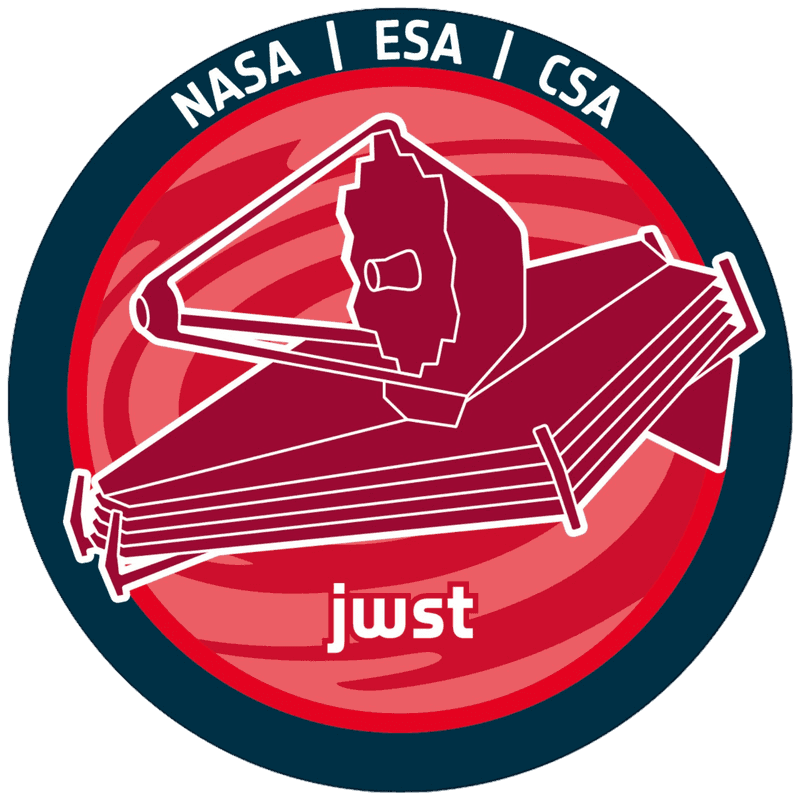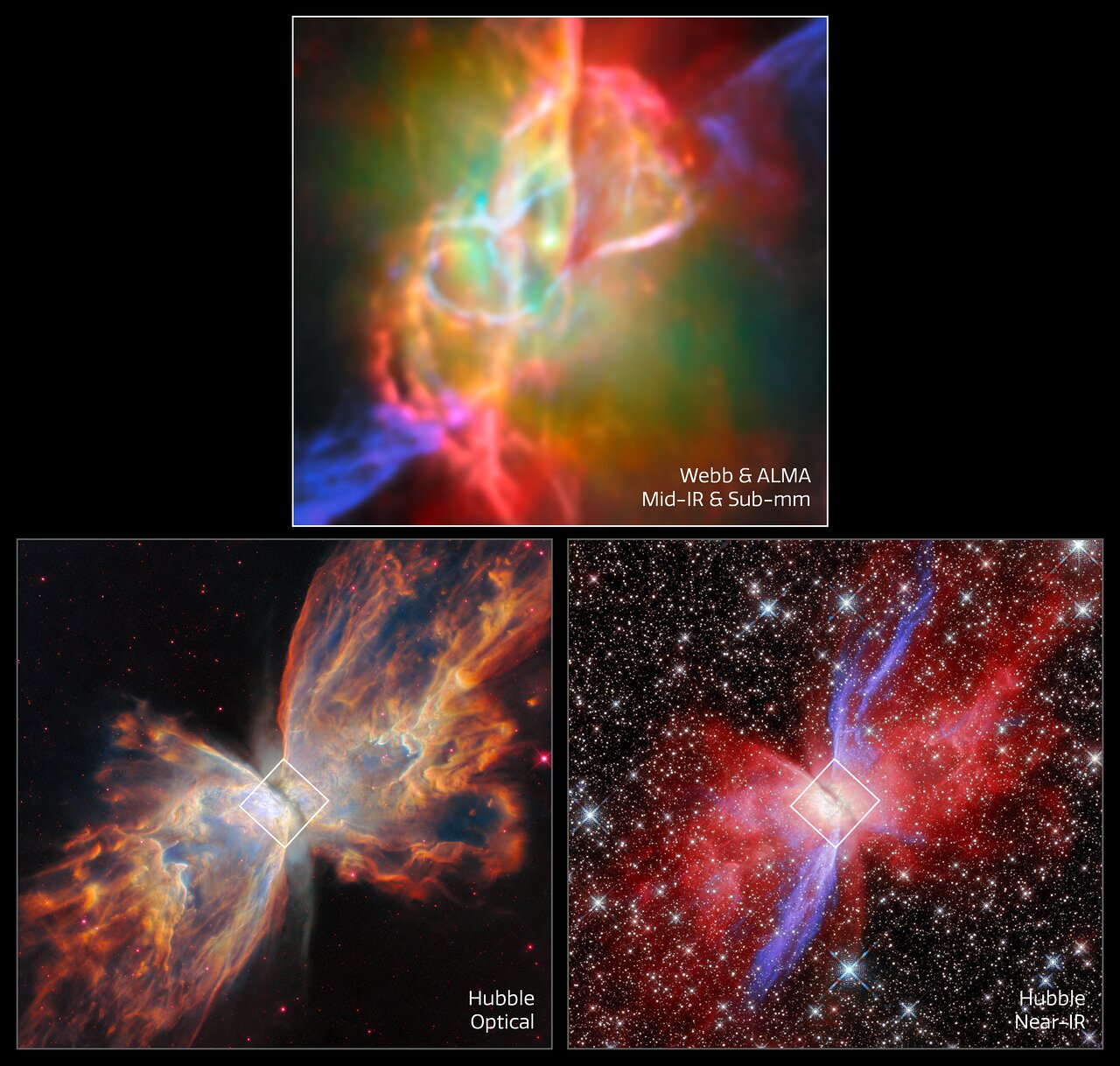Butterfly Nebula NGC 6302 (Hubble and Webb + ALMA images, stacked)
This image set showcases three views of the Butterfly Nebula, also called NGC 6302. The Butterfly Nebula, located about 3400 light-years away in the constellation Scorpius, is one of the best-studied planetary nebulae in our galaxy.
Planetary nebulae are among the most beautiful and most elusive creatures in the cosmic zoo. These nebulae form when stars with masses between about 0.8 and 8 times the mass of the Sun shed most of their mass at the end of their lives. The planetary nebula phase is fleeting, lasting only about 20 000 years.
The Butterfly Nebula is a bipolar nebula, meaning that it has two lobes that spread in opposite directions, forming the ‘wings’ of the butterfly. A dark band of dusty gas poses as the butterfly’s ‘body’. This band is actually a doughnut-shaped torus that’s being viewed from the side, hiding the nebula’s central star - the ancient core of a Sun-like star that energises the nebula and causes it to glow. The dusty doughnut may be responsible for the nebula’s insectoid shape by preventing gas from flowing outward from the star equally in all directions.
The lower two images of the three images shown here highlight the bipolar nature of the Butterfly Nebula in optical and near-infrared light captured by the NASA/ESA Hubble Space Telescope. The upper image zooms in on the centre of the Butterfly Nebula and its dusty torus, providing an unprecedented view of its complex structure. The Webb data are supplemented with data from the Atacama Large Millimetre/submillimetre Array, a powerful network of radio dishes.
While the nebula’s central star is blanketed with thick, dusty gas at optical wavelengths, Webb’s infrared capabilities reveal the central star and show the doughnut-shaped torus and interconnected bubbles of dusty gas that surround it.
[Image description: Three views of the same nebula, presented in a triangle with one image on top and two on the bottom. The bottom two images, which are labeled ‘Hubble Optical’ and ‘Hubble Near IR’, show the nebula at roughly the same scale. These two images show some similar features, including a dark dust lane that runs through the centre of the nebula and two broad clouds that emerge from either side of the dust lane like the outstretched wings of a butterfly. A diamond-shaped region centred on the dust lane is outlined in each of these images. In the optical Hubble image, the nebula appears clumpy and nearly opaque, with few background stars showing through the cloudy material. The nebula appears in different shades of cream, yellow and orange, with the lightest colours appearing closest to the centre. The background of space is black with a handful of stars that are tinged pink. In the near-infrared Hubble image, the nebula appears cream coloured and most opaque near the centre, then becomes reddish with purple streaks and more translucent out toward the wings of the nebula. There are hundreds of background stars in the image, many of which are visible through the nebula. The top image zooms in on the diamond-shaped region near the centre of the other two images. This image is labeled ‘Webb & ALMA, Mid-IR & Sub-mm’. This image is completely different from the other two, showing a bright source at the centre that is surrounded by greenish nebulosity and several looping lines in cream, orange and pink. The upper-right and lower-left corners of this image show a purple streak pointing out of the image.]
Credit:ESA/Webb, NASA & CSA, M. Matsuura, J. Kastner, K. Noll, ALMA (ESO/NAOJ/NRAO), N. Hirano, J. Kastner, M. Zamani (ESA/Webb)
About the Image
| Id: | weic2517f | |
|---|---|---|
| Type: | Collage | |
| Release date: | 27 August 2025, 10:00 | |
| Related releases: | weic2517 | |
| Size: | 3418 x 3253 px | |


